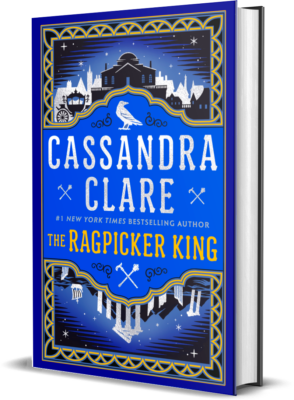The idea for the Mortal Instruments came to me one afternoon in the East Village. I was with a good friend of mine, who was taking me to see the tattoo shop where she used to work. She wanted to show me that her footprints were on the ceiling in black paint — in fact the footprints of everyone who’d worked there were on the ceiling, crisscrossing each other and making patterns. To me it looked like some fabulous supernatural battle had been fought there by beings who’d left their footprints behind. I started thinking about a magical battle in a New York tattoo shop and the idea of a secret society of demon-hunters whose magic was based on an elaborate system of tattooed runes just sprang into my mind. When I sat down to sketch out the book, I wanted to write something that would combine elements of traditional high fantasy — an epic battle between good and evil, terrible monsters, brave heroes, enchanted swords — and recast it through a modern, urban lens. So you have the Shadowhunters, who are these very classic warriors following their millennia-old traditions, but in these urban, modern spaces: skyscrapers, warehouses, abandoned hotels, rock concerts. In fairy tales, it was the dark and mysterious forest outside the town that held the magic and danger. I wanted to create a world where the city has become the forest — where these urban spaces hold their own enchantments, danger, mysteries and strange beauty. It’s just that only the Shadowhunters can see them as they really are.
The Ragpicker King is the sequel to Sword Catcher. In it, Kel — now fully embedded with the Ragpicker King and his crew — tries to solve a mystery: Who’s responsible for the murders in the Shining Gallery? If someone’s plotting against Castellane, who is it? And why is the woman he’s loved since he was a child, Antonetta Alleyne, determined to marry a monster?
